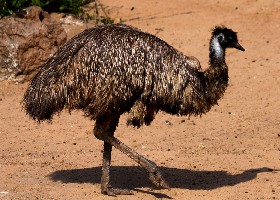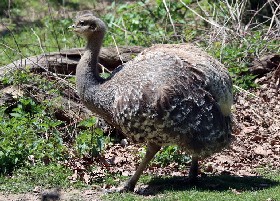Somali Ostrich Struthio molybdophanes (prev. S. camelus molyb.)
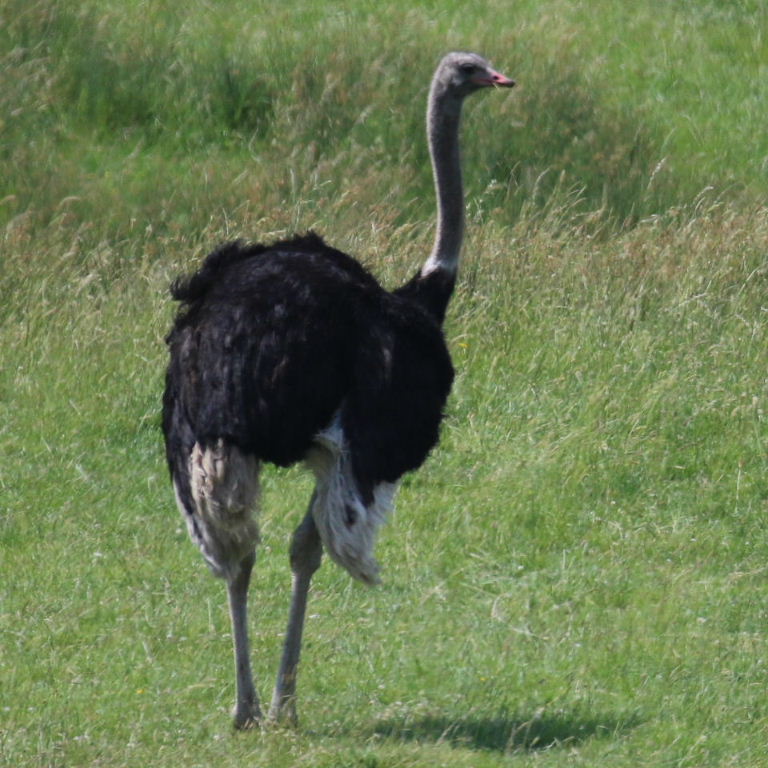
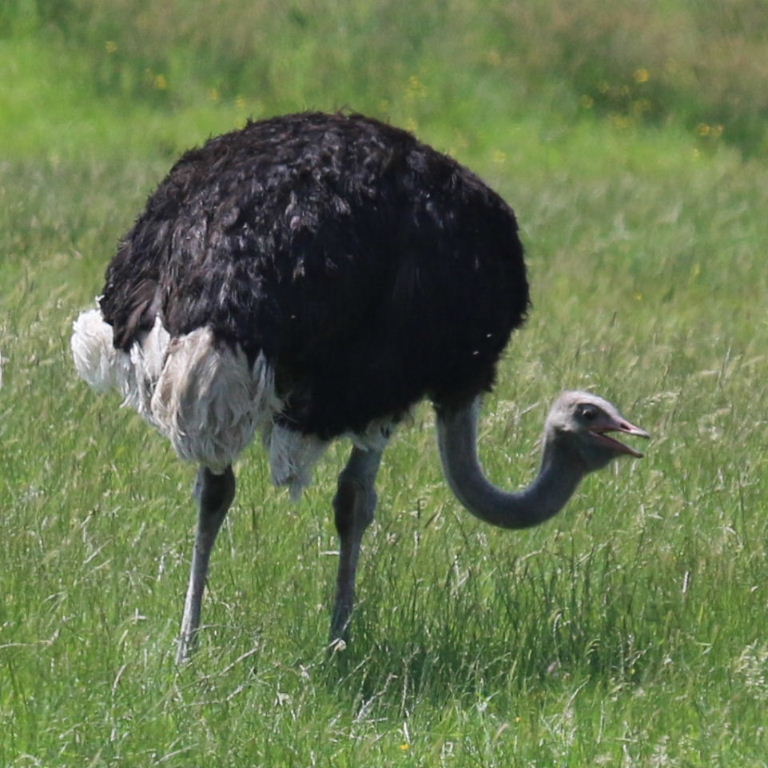
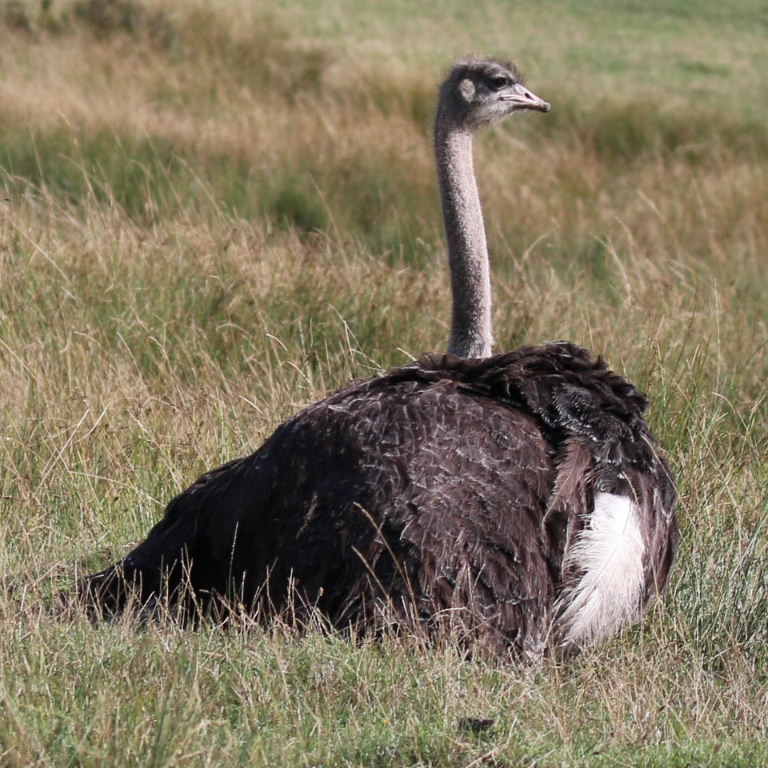
Prior to 2014 there were 4 subspecies of Ostrich
Struthio camelus, all from Africa.
The Arabian Ostrich, S. c. syriacus, became extinct in 1966.
In 2014, the Somali Ostrich (above), also called Blue-necked, was reclassified as a full species,
S. molybdophanes. The male's grey neck and legs become bluer in the breeding season.
The female (above right) is darker brown than the other species.
OSTRICH SUBSPECIES



The nominal subspecies of "common" Ostrich (above),
Struthio camelus camelus, is native to North Africa, mainly south of the Sahara, and is called the Red-necked,
Northern or North African.



As its name indicates, the male has pink-red neck and legs, becoming very red for adult males in the breeding season (above).



The Southern Ostrich,
S. c. australis, also called the South African and, misleadingly, the Black-necked,
is the most common and native to southern Africa. It has a greyish neck and grey or pinky-grey legs. As with all Ostriches,
the male plumage is black with white/off-white and the female (above right) is brown or grey-brown.
 Ostrich wearing a tutu.
Ostrich wearing a tutu.
 Masai ostrich
Masai ostrich
 Ostrich egg - the largest egg of any living bird.
Ostrich egg - the largest egg of any living bird.
The Masai Ostrich,
S. c. massaicus, also called the Pink-necked, is native to parts of East Africa (Kenya/Tanzania).
It has a pinky-grey neck and pink legs, the male becoming redder when breeding.



